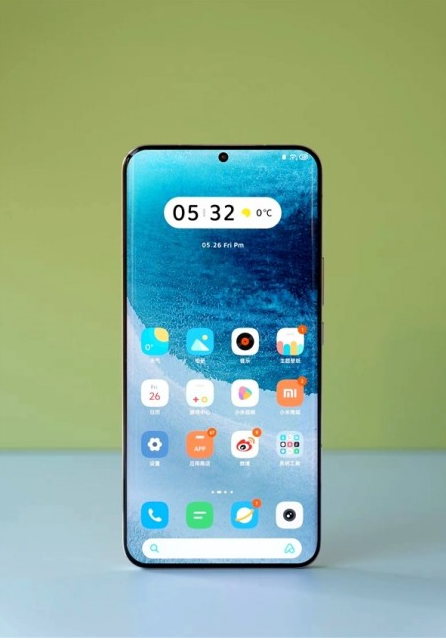Home >Technology peripherals >It Industry >Details of the new generation of Xiaomi Mi 14 series mobile phones are exposed: two designs: small straight screen and extremely narrow and slightly curved screen
Details of the new generation of Xiaomi Mi 14 series mobile phones are exposed: two designs: small straight screen and extremely narrow and slightly curved screen
- WBOYWBOYWBOYWBOYWBOYWBOYWBOYWBOYWBOYWBOYWBOYWBOYWBforward
- 2023-07-04 19:45:121502browse
News on July 3, the first half of the year has passed, and people are beginning to pay attention to new products that may emerge in the second half of the year. The most anticipated one is the new generation flagship chip Snapdragon 8 Gen3 Xiaomi Mi 14 series. According to the latest news, the Xiaomi Mi 14 series is expected to debut in November this year. Recently, digital bloggers have further revealed the details of this model.

According to news from digital bloggers, the Xiaomi Mi 14 series will launch two models, namely Xiaomi 14 and Xiaomi 14 Pro. Xiaomi Mi 14 will continue the well-received small straight screen design of its predecessor Xiaomi Mi 13, while Xiaomi Mi 14 The Pro will use an extremely narrow and slightly curved screen and adopt the FIAA Slim design solution being developed by Huaxing Optoelectronics. Compared to Xiaomi 13 The Pro's curved surface is narrower, and the curved surface is basically only in the black border area, which will not affect the screen display. At the same time, the visual frame is greatly reduced, presenting a better hand feel. In addition, in order to further reduce the bezel width, the phone will also be equipped with a small right-angled middle frame, giving a front-facing "full-screen" visual effect.

#According to the editor’s understanding, Xiaomi Mi 14 series will be equipped with Snapdragon 8 for the first time The Gen3 flagship platform uses TSMC’s N4P process. This platform adopts a new 1 5 2 architecture design, including 1 Cortex X4 ultra-large core, 5 Cortex The A720 large core and 2 Cortex A520 small cores are the most powerful Snapdragon 5G to date. SoC. According to AnTuTu V10 version test, the comprehensive running score exceeds 1.77 million. In addition, the entire Xiaomi Mi 14 series will be equipped with a periscope telephoto lens as standard. Xiaomi Mi 14 will be equipped with a periscope telephoto lens with a focal length of 90mm, supporting 3.9x optical zoom. The Pro will be equipped with a periscope telephoto lens with a focal length of 115mm and support 5x optical zoom. This series will also support 4K selfies and provide 60fps format, greatly improving the selfie experience.
The Xiaomi 14 series is expected to be unveiled in November this year and is expected to be the first batch of mobile phones equipped with the new generation Snapdragon 8 Gen3 flagship platform. We'll continue to watch as more details are released.
The above is the detailed content of Details of the new generation of Xiaomi Mi 14 series mobile phones are exposed: two designs: small straight screen and extremely narrow and slightly curved screen. For more information, please follow other related articles on the PHP Chinese website!
Related articles
See more- Technical challenges and resource constraints: Apple AR glasses face difficulties
- Tesla's Austin factory triples production capacity to reach 5,000 Model Y units per week
- RTX 4060/4060 Ti: New cost-effective choice, price exposed
- Google settles Washington state geo-tracking lawsuit for $39.9 million
- Marvell Technology established a chip R&D center in Ho Chi Minh City, Vietnam, expanding its global R&D network

